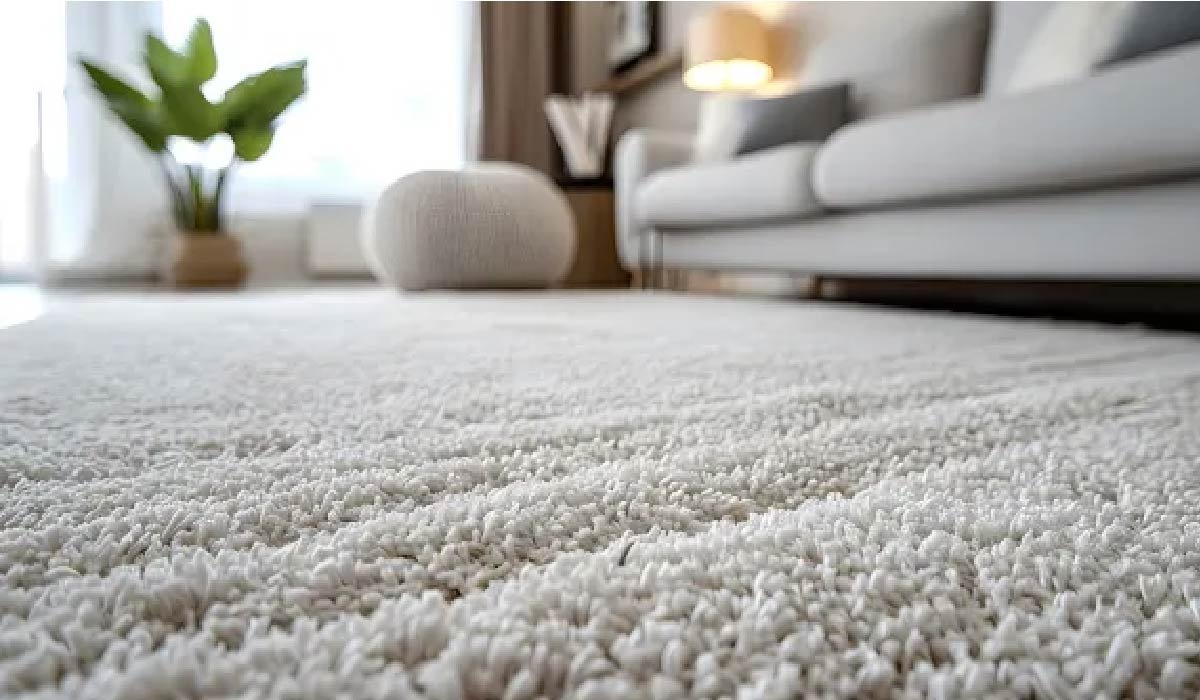Wollmatten
Wollmatten are more than just rugs; they are a lifestyle choice that merges comfort, elegance, and environmental consciousness. These wool mats are crafted from natural fibers and bring together centuries of tradition with modern demands for eco-living. Whether placed in your living room, bedroom, yoga studio, or garden, Wollmatten offers a tactile warmth and aesthetic appeal that synthetic alternatives simply cannot match. Beyond their visual charm, they are sustainable, long-lasting, and promote healthier indoor air. In this comprehensive guide, you will learn everything about Wollmatten—from their ancient origins and unique wool properties to practical uses, maintenance, and where to buy them. If you’re looking for a smart and sustainable addition to your home, keep reading.
What Are Wollmatten?
Wollmatten are natural wool mats made primarily from sheep’s wool. These mats are known for their soft texture, impressive durability, and eco-friendly nature. What makes Wollmatten special is the unique combination of insulation, cushioning, and aesthetic value they provide. Unlike synthetic rugs, they are breathable, fire-resistant, and biodegradable. These mats are widely used in various settings, including homes, gyms, gardens, yoga studios, and even in sustainable construction projects. Their usage spans cultures and continents, from decorative hand-woven pieces in Europe to functional felted mats used in agriculture and environmental conservation. The modern revival of Wollmatten is driven by the growing demand for products that align with a greener lifestyle.
The Origins and History of Wollmatten
The history of Wollmatten is deeply rooted in ancient traditions. Nomadic tribes across Central Asia and the Middle East have used felted wool mats for centuries to insulate their tents and provide comfort during harsh weather. These early wool mats were prized for their ability to retain heat and resist moisture, which made them ideal for portable bedding. In medieval Europe, especially in regions like Germany and Austria, wool rugs evolved into both decorative and functional items. Artisans wove complex patterns that reflected cultural symbols and family heritage. Over time, Wollmatten transitioned from practical flooring to luxury household items, combining artistry with utility. This evolution laid the foundation for the premium, eco-friendly Wollmatten available today.
Wool as a Material – What Makes It Unique?
Wool is an extraordinary material with characteristics that make it ideal for crafting high-performance mats. It is primarily composed of keratin, a natural protein that gives wool its strength, elasticity, and resilience. Each wool fiber has a layered structure with a cuticle, cortex, and medulla that work together to trap air, regulate moisture, and resist bacteria. One standout feature of wool is its hygroscopic nature, allowing it to absorb up to 30% of its weight in moisture without feeling wet.
This makes Wollmatten perfect for maintaining indoor humidity balance. Wool is naturally flame-resistant, self-extinguishing, and does not release harmful toxins when exposed to fire, unlike synthetic fibers. It is also renewable and biodegradable, making it a sustainable choice for eco-conscious consumers. Compared to plastics or polyester, wool provides unmatched comfort, air purification, and longevity.
Materials and Craftsmanship Behind Wollmatten
Wollmatten are usually made from 100% natural sheep wool, often combined with other fibers like cotton or jute for added strength or texture. The quality of the wool significantly affects the performance and softness of the mat. Some mats use untreated or organic wool, which retains more lanolin and natural resilience. Others may be processed for stain resistance or color enhancement. Dyes used in Wollmatten vary from plant-based, non-toxic options to synthetic ones for achieving vivid colors.
The craftsmanship of Wollmatten ranges from traditional hand-weaving techniques to precision-controlled modern machinery. Countries like Germany, Austria, and Switzerland are known for their expert wool mat artisans who combine heritage skills with contemporary design aesthetics. Every detail, from the weaving pattern to the stitching on the edges, reflects a commitment to quality and sustainability.
Benefits of Using Wollmatten
Wollmatten offers a wide range of practical and health benefits. Their thermal insulation properties help maintain warm floors in the winter and a cooler feel during summer, contributing to a more energy-efficient home. They also regulate air humidity by absorbing and releasing moisture, creating a comfortable indoor environment. These mats are naturally hypoallergenic, repelling dust mites, mold, and mildew—ideal for allergy sufferers.
Their porous structure helps reduce echo and sound transmission, making your space quieter and more peaceful. Wool’s antibacterial and odor-resistant properties ensure a fresh and clean atmosphere. Most importantly, the soft and resilient feel underfoot brings unmatched comfort and luxury to everyday living. Whether used in a bedroom, hallway, or yoga studio, Wollmatten enhances both wellness and style.
Different Types of Wollmatten
There are several varieties of Wollmatten, each designed for specific functions and styles. Flatwoven Wollmatten are lightweight and perfect for modern minimalist interiors. Plush Wollmatten offers deep pile comfort, ideal for bedrooms and lounging areas. Felted mats are denser and more utilitarian, often used in construction or as garden liners. Decorative wool rugs feature intricate patterns and are suitable for living rooms or entryways. There are also certified organic Wollmatten made from untreated wool and dyed with plant-based pigments. Specialized versions include anti-slip backings for safety, hypoallergenic options for sensitive users, and outdoor variants designed to withstand moisture and sun. Each type serves a purpose while upholding the core qualities of comfort, sustainability, and durability.
How Wollmatten Are Made – Step-by-Step
The process of making Wollmatten begins with the sourcing of raw wool, typically from ethically raised sheep. The wool is cleaned to remove dirt, lanolin, and other impurities. It is then carded to align the fibers, creating a uniform texture for weaving or felting. In the dyeing stage, natural or low-impact dyes are applied, and the wool is left to dry. For felted mats, the wool is compressed under heat, moisture, and pressure to bond the fibers into a dense sheet. For woven rugs, looms are used to interlace wool threads in specific patterns.
The edges are often bound or hemmed for durability. Eco-conscious manufacturers may use solar energy and water recycling systems during production. Each mat is inspected, rolled, and packaged with minimal or recyclable materials, completing a process that blends tradition with environmental responsibility.
Wollmatten in Interior Design
Interior designers love Wollmatten for their ability to transform a room through color, texture, and function. These mats work beautifully in modern lofts, rustic cabins, boho apartments, or Scandinavian-themed homes. Placing a Wollmatte in an entryway immediately creates a warm and welcoming feel. Under a dining table, it defines space while protecting the flooring. In bedrooms, they serve as luxurious bedside runners. Wollmatten can also be used as wall art or hung as acoustic panels to reduce noise. Layering multiple mats adds depth and visual interest. Their rich texture contrasts wonderfully with hardwood, tile, or stone flooring. Available in neutral shades and bold patterns, Wollmatten offers endless design possibilities while subtly signaling an eco-conscious lifestyle.
Wollmatten in Sustainable Construction and Gardening
Beyond interior decor, Wollmatten are used in green construction and landscaping due to their impressive functional benefits. In eco-homes, thick wool mats are used as thermal insulation between floors and walls, reducing energy usage. In landscaping, they serve as erosion control layers, weed suppressors, and frost protectors for plants. As they biodegrade, they enrich the soil with nutrients, making them perfect for permaculture and organic gardening projects. Their breathability allows water to reach plant roots while protecting them from temperature extremes. In green roofing systems, they act as a natural cushion and moisture barrier. These uses showcase how versatile and essential Wollmatten are in building a more sustainable world.
Wollmatten for Fitness, Yoga, and Wellness
Wollmatten provides an excellent alternative to rubber or foam yoga mats. Their plush yet supportive texture is gentle on joints, allowing for longer, more comfortable sessions. Wool’s natural grip helps maintain posture without slipping, even during hot yoga or pilates. Unlike synthetic mats, Wollmatten remain dry and odor-free thanks to wool’s moisture-wicking properties. Their breathability maintains a consistent temperature, preventing discomfort from sweat or cold floors. They are also antimicrobial, making them ideal for wellness centers, meditation spaces, or home gyms. For individuals who prioritize both sustainability and comfort in their fitness routines, Wollmatten is an ideal solution that connects body, mind, and nature.
Crafting with Wollmatten
Creative individuals and artisans often use Wollmatten in crafting and DIY projects. These mats serve as durable, textured bases for needle-felting, embroidery, and quilting. They can be cut and repurposed into coasters, wall art, storage bins, or even pet beds. Crafters appreciate the structural integrity of wool, which resists fraying and holds shape well. For sewing projects, wool mats act as pin-friendly cutting boards that protect surfaces. Upcycled Wollmatten scraps can be turned into heat-resistant potholders, chair pads, or decorative pillows. This versatility makes Wollmatten not just a product but a resource for endless creative exploration.
Maintenance and Care Tips
Taking care of Wollmatten is simple but important for longevity. Regular vacuuming with a gentle suction head removes dirt without pulling on the fibers. For spills, blot immediately with a dry cloth—avoid rubbing as it may embed the stain. For deeper cleaning, use a mild wool detergent and lukewarm water. Avoid direct sunlight exposure to prevent fading, and rotate the mat periodically to ensure even wear. Store unused Wollmatten rolled up in a breathable cotton bag away from moisture and pests. Professional cleaning every 1-2 years will help refresh the wool without damaging it. With proper care, your Wollmatte can last for decades while retaining its comfort and beauty.
Comparing Wollmatten to Other Floor Mats
| Feature | Wollmatten | Synthetic Mats | Cotton Rugs |
|---|---|---|---|
| Material | Natural wool | Plastic, polyester | Plant fiber |
| Durability | High | Medium | Low |
| Sustainability | Excellent | Poor | Medium |
| Comfort | Soft, cozy | Often stiff | Soft but thin |
| Flame resistance | Yes | No | No |
| Hypoallergenic | Yes | No | Rare |
Wollmatten outshines its counterparts in nearly every category. They offer more comfort, better environmental performance, and improved health benefits compared to synthetic or cotton mats. While the upfront cost may be higher, the long-term value and sustainability make them the superior choice.
Environmental Impact of Wollmatten
The ecological footprint of Wollmatten is impressively low. Wool is a renewable resource that regenerates naturally each year. When processed responsibly, wool production requires less water and energy than synthetic manufacturing. Biodegradable Wollmatten decompose within a few years, unlike plastics that persist for centuries. Many manufacturers source surplus wool that would otherwise go to waste, promoting a circular economy. Natural dyes reduce water pollution and chemical runoff. Plus, wool mats don’t shed microplastics into the environment. Choosing Wollmatten is a simple yet powerful way to align your purchases with environmental responsibility.
Customer Testimonials and Real-Life Experiences
Real users often praise Wollmatten for their durability, aesthetic appeal, and comfort. One homeowner shared how her bedroom felt instantly warmer and more elegant after placing a wool mat under the bed. A yoga enthusiast mentioned better joint support and no post-session odor, even after weeks of daily use. Parents love that their toddlers can play safely on hypoallergenic surfaces. Interior designers highlight Wollmatten as a smart way to add texture while promoting sustainable values. These real-life experiences show that Wollmatten is more than just decor—it’s lifestyle upgrades.
Common Challenges in the Wollmatten Industry
Despite their benefits, the Wollmatten industry faces some hurdles. High-quality wool can be expensive due to ethical farming practices and handcraftsmanship. Synthetic alternatives often dominate the market because of their lower prices, creating a challenge for awareness. Not all consumers understand the advantages of natural wool or how to care for it properly. Additionally, climate conditions and global supply chain issues can impact wool availability and pricing. However, increasing interest in sustainability and wellness continues to drive growth and innovation in the field.
Future of Wollmatten in Green Living and Design
The future for Wollmatten is bright as more consumers seek green living solutions. Innovations like stain-resistant wool coatings, biodegradable anti-slip backings, and digitally patterned designs are expanding market possibilities. New uses are emerging in schools, hospitals, and office spaces where air quality and comfort are priorities. As designers and architects embrace circular economy principles, Wollmatten is finding roles beyond flooring—in insulation panels, acoustic boards, and wall art. The blend of tradition, technology, and environmental consciousness ensures that Wollmatten will continue to lead in sustainable home innovation.
Buying Guide – How to Choose the Right Wollmatte
Choosing the right Wollmatte depends on where and how you plan to use it. For bedrooms and lounges, opt for plush or thick-pile mats. Flatwoven styles suit entryways and under furniture. Consider the size of the space and match the color to your decor palette. If you have allergies, choose organic or untreated wool versions. Look for certifications like GOTS or OEKO-TEX to ensure chemical-free production. Examine stitching, binding, and backing for durability. Read reviews or get samples if buying online. Prioritize artisanal or small-batch producers for the best blend of quality and ethics.
Where to Buy Wollmatten
You can find high-quality Wollmatten at local artisan markets, sustainable home decor stores, and online eco-retailers. Platforms like Etsy offer handmade options with customizable designs. Interior design boutiques may carry exclusive collections made by regional wool cooperatives. Amazon also has a variety, but be sure to check for authenticity and material details. Social media groups and sustainable living forums are great places to discover new brands and get real customer feedback. When shopping, prioritize transparency, certifications, and customer service.
Conclusion
Wollmatten are more than just stylish floor coverings; they are conscious lifestyle investments that support personal wellness and environmental sustainability. Made from natural, renewable materials, they bring comfort, warmth, and beauty to any space. Their hypoallergenic, insulating, and sound-absorbing properties make them functional in every room. As the world embraces eco-friendly choices, Wollmatten stands as a timeless, versatile, and responsible alternative to synthetic mats. Whether you’re decorating a new home or upgrading a personal space, choosing a Wollmatte means you’re stepping toward a greener, more mindful way of living.
FAQs About Wollmatten
What are Wollmatten?
Wollmatten are mats made from natural sheep’s wool. They are soft, durable, and eco-friendly. People use them in homes, yoga, gardening, and even construction because they provide comfort, insulation, and sustainability.
Are Wollmatten eco-friendly?
Yes, Wollmatten are eco-friendly because they are made from natural wool, which is renewable and biodegradable. They don’t release harmful microplastics like synthetic mats and can even enrich the soil when they naturally decompose.
How long do Wollmatten last?
With proper care, Wollmatten can last 10–20 years or more. Wool is a strong and elastic fiber that resists wear, so these mats stay beautiful and useful much longer than synthetic options.
Can Wollmatten be used for yoga or fitness?
Yes, Wollmatten are excellent for yoga and fitness. They provide soft cushioning for joints, absorb moisture without feeling wet, and stay odor-free. They also regulate temperature, making workouts more comfortable.
How do you clean Wollmatten?
To clean Wollmatten, vacuum them regularly to remove dust. For spills, blot with a cloth and mild soap if needed. Avoid rubbing and keep them out of direct sunlight. With simple care, they stay fresh and last for many years.






